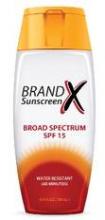How do you advise your patients about sunscreen? Some fodder for discussion (or possibly more confusion) comes from the Environmental Working Group, which has released its annual list of which sunscreens it deems both safe and effective – according to its criteria.
The Environmental Working Group (EWG), a nonprofit environmental health research and advocacy organization based in Washington, has issued the list for the past 7 years, just before Memorial Day weekend – the date most Americans view as the official start of summer.
This year, the EWG said that only 25% of the 1,400 sunscreens, lotions, lip products, and makeups that claim sun protection properties met its standards.
"The vast majority of sunscreens available to the consumer aren’t as good as most people think they are, but there are a handful of products that rise above the rest," Sonya Lunder, senior research analyst at EWG and lead author of the report, said in a statement. "The best advice for concerned consumers is to use sun-protective clothing, stay in the shade to reduce intense sun exposure, and schedule regular skin examinations by a doctor," she said.
The EWG’s pronouncements are not without controversy. The group claimed in its press release that part of the reason that melanoma has been on the rise may be caused by "the decades of deceptive marketing claims by sunscreen manufacturers."
But your patients need not panic if their favorite sunscreen didn’t make the EWG list, according to the American Academy of Dermatology. The AAD’s position on sunscreens is practical: "The best type of sunscreen is the one you will use again and again," said Dr. Henry W. Lim, chairman of the dermatology department at Henry Ford Hospital in Detroit, in a general AAD statement on sunscreen issued on May 20.
"Just be sure to choose one that offers broad-spectrum protection, has an SPF of 30 or greater, and is water resistant," said Dr. Lim.
However, the AAD emphasized in the statement that seeking shade and wearing protective clothing are also important actions to avoid excessive sun exposure and reduce the risk of skin cancer.
The Food and Drug Administration does regulate sunscreens, having issued a final rule governing much about the products in June 2011. Most of the regulations went into effect in June 2012, but products did not start appearing with the new labels until January.
Manufacturers cannot claim that their products are waterproof or sweatproof. Products can be labeled broad spectrum if they prove to the agency that they protect against both ultraviolet B radiation (UVB) and ultraviolet A radiation (UVA) and have a sun protection factor of 15 or higher.
The EWG also says that the FDA should stop manufacturers from selling products with an SPF of 50 or higher, saying they lead consumers to spend more time in the sun than is advisable. This year, the agency will examine whether those products provide any better protection than an SPF 50 sunscreen. The agency proposed in June 2011 that sunscreens with an SPF greater than 50 be labeled "SPF 50–plus," but nothing further has been issued.
According to the EWG, its analysis of 750 beach and sport sunscreens found that the new FDA rules have not led to sunscreens that are better than those sold in the years before the ruling. It gave only 184 of them its thumbs up. Similarly, for other products that claimed to have sun protection, the EWG only recommended 22 moisturizers, 18 lip balms, and 16 kinds of makeup.
The EWG also said that consumers should not use spray sunscreens.
The AAD agreed that sprays may not be as effective because the individual might not use enough to cover all sun-exposed areas of the body.
The EWG also said that Americans should not use products that contain retinyl palmitate or oxybenzone. The group claims that retinyl palmitate is carcinogenic, and that oxybenzone is an endocrine disrupter. About half of the beach and sport sunscreens in the EWG 2013 list contain oxybenzone, the group said.
The AAD has refuted the EWG’s claims about retinyl palmitate and oxybenzone in the past.
On Twitter @aliciaault


